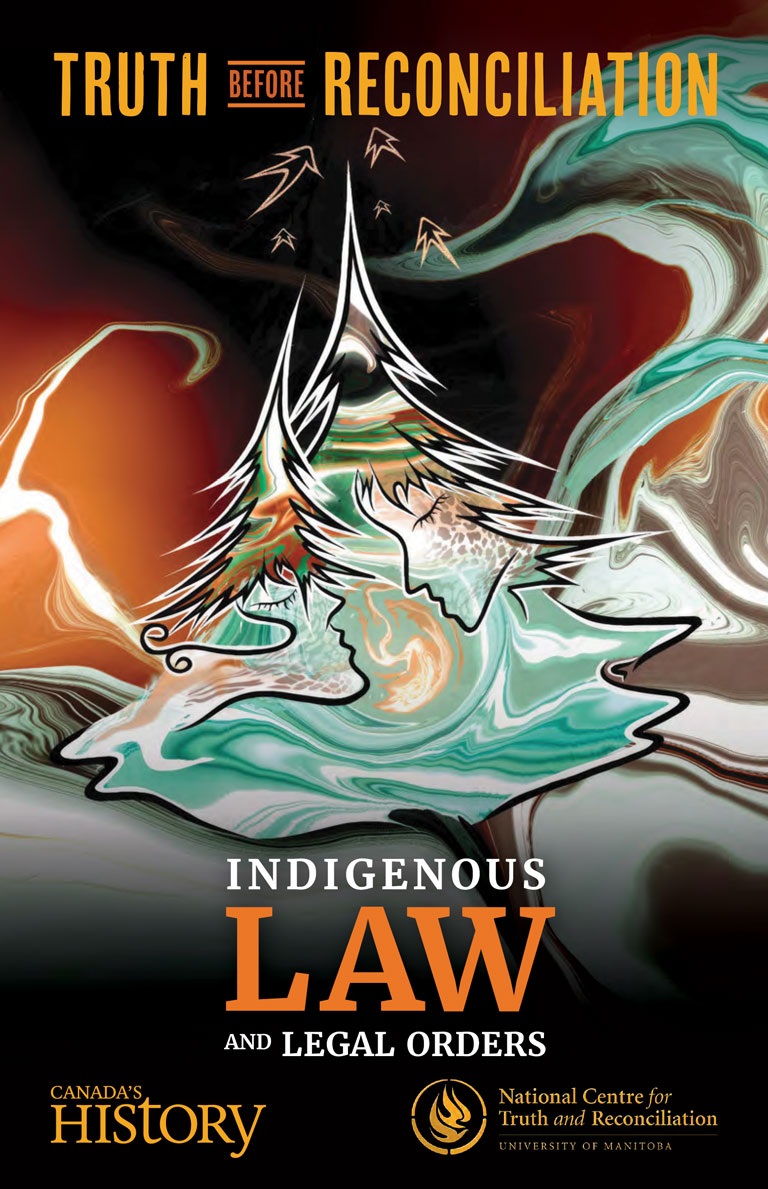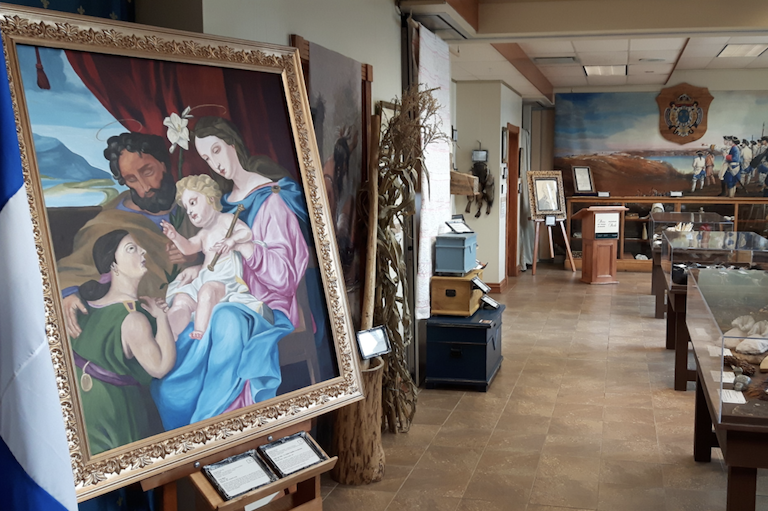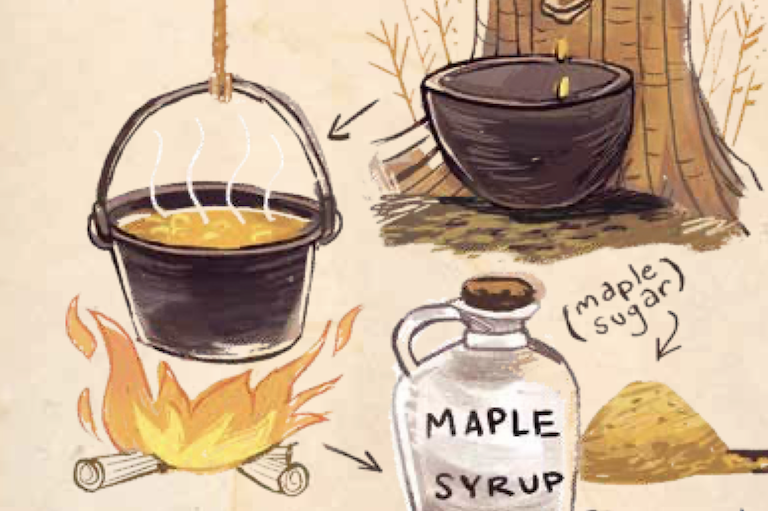Learning about Indigenous Law and Legal Orders Through Story
Truth Before Reconciliation: Indigenous Law and Legal Orders Canada’s National History Society with the National Centre for Truth and Reconciliation |
| Societies throughout the world have different sources, or authorities, of law. In this activity, students will explore authorities of law in Indigenous societies. Students will specifically look at stories and use laws found in a story to approach solving a problem. This lesson and related handouts can be found in the Educator's Guide. |
Teacher Background |
|
Activity: Part 1 |
1. All laws come from a place of authority—someone or something that people listen to and respect. It is important to know where the law comes from so that people can understand, follow, and use the law. According to Dr. John Borrows, there are five main sources of Indigenous laws that ground legal thinking. His list is found on page 15 of Truth Before Reconciliation: Indigenous Law and Legal Orders. Indigenous societies may record their laws in many different ways. Have your students explore pages 16 and 17 to discover some of the ways that Indigenous law is woven into every part of life. Ask your students: where is Indigenous law found? How is it communicated to members of society? |
Activity: Part 2 |
1. Explain to students that for the next part of the activity, they are going to focus on one of the places you can find Indigenous law: stories. As explained on page 20 of the magazine, “By asking questions of the stories, we can learn how people in the past thought about the problems and how they worked to solve them. When we draw on past stories or cases, they help solve the current problem or conflict by telling us what people have done before.” Students are going to learn how to analyze stories for legal principles, processes, and decisions. They are going to read a story and identify the problem, facts, decision/resolution, and the reasons behind the decision. 2. Have students read pages 20-22. They will start by learning about the context of analyzing stories and then read an example, the story “Summer in a Bag.” 3. As a class, work together to answer the following questions about “Summer in a Bag.” We have provided some potential answers for this section based on the problem, “How does a group of people living together respond to a catastrophe that affects everyone?” It is important to remember, however, that there is never only one right answer. Many problems can be brought to a story, and the facts and decisions that matter depend on the problem that is being asked. Legal reasoning is about interpretation and application based on context. 4. After the class discussion, have students read page 23 for the analysis of the story. 5. Give students an opportunity to analyze another story using this same method. Hand out copies of “The Story of Porcupine” and the analysis document. Alternatively, you can play the following video, which features Kenthen Thomas telling the Story of Porcupine: https://www.youtube.com/watch?v=3LNeGvNJwps&t=1s This story comes from the Secwépemc Nation and shares how two opposing groups of people might come together to resolve their differences. 6. As a class, review your answers to the questions together. Ask your students: What other questions would you have asked? Did you have a different interpretation than what was provided? |
Activity: Part 3 |
1. Having completed a legal analysis of two stories, students can now start to consider how they can apply what they learned in these stories to problems in their own lives. Begin by asking students to reflect on what they learned in either “Summer in a Bag” or “The Story of Porcupine”: What did you wonder about? What surprised you? How does this connect to your life? What types of problems would the lessons in this story help you solve? 2. Have students read page 24 in Truth Before Reconciliation: Indigenous Law and Legal Orders. 3. Provide students the situation on page 25 and give them a chance to apply what they learned in “Summer in a Bag” to the situation. Divide the class into four groups and assign each group one of the following perspectives: the birds, the swimmers and boaters, the company, and the river. In their groups, have students prepare a short paragraph or bullet point list describing the problem from their perspective. Bring the class back together and have each group take turns sharing their concerns. Encourage a conversation to determine a process for coming up with a solution. Remind students of the story “Summer in a Bag,” and ask:
Once students have determined a process to follow, encourage them to explore creative and collaborative solutions. Document the solution (the decision and the reason) through a poster or art piece, story, or poem. 4. Have students think about how the lessons in “Summer in a Bag” or “The Story of Porcupine” could apply to other examples in their lives or communities. Here are some sample situations you could present to students or consider researching other examples currently being discussed in your own community. Remind students that this exercise is about finding ways that we are all going to live together and treat each other fairly and to find solutions to the problems we are encountering today. As you explore the scenarios, have students consider the following questions: How do you think about the situation? What process could you follow? How do you ensure all perspectives are accounted for? How might you solve the problem?
5. Have students reflect on what they have learned about Indigenous law and legal orders by creating a mind map or visual summary of their learning. Encourage them to include pictures, definitions, key words, etc. |
Themes associated with this article
Advertisement






